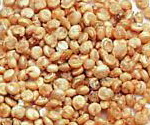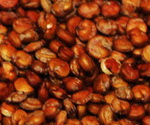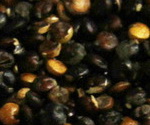|
The Three Quinoa Varieties – Gold, Red, and Black


There may be over 100 quinoa varieties, but the three main types of quinoa sold commercially are what we need to learn about here. Each has its own characteristics that make it completely unique from the others. Let's take a bite out of each of these different varieties and see where it takes us.
Gold Quinoa Varieties The gold quinoa, or cream colored variety, is generally the most common variety. Not only can you find it abundantly in the stores, but it also has the most “typical” taste. As it is the most common type, the other forms are compared using this point of reference. One of the most familiar aspects of the gold variety is that it tends to keep its cream color and is a bit fluffier, lighter, and creamier than the other varieties. It has a texture that mixes well with many foods and is easily incorporated into baked goods. The gold variety is used hot in main dishes and side dishes, and cold in salad. Because of its tender, light texture, the gold variety is a favorite as a breakfast cereal as it easily mixes well with milk for a hot oatmeal substitute. Think about how you often see rice or couscous used in dishes and the gold variety can be used in much the same way. Red Quinoa Varieties The red variety has a slightly crunchier texture than the gold variety and has a bit sharper or even some would say a bitter taste. There is a nutritional difference between varieties as the red variety is found to be higher in protein and calories with three grams more fiber per serving than its golden counterpart. Besides the nutritional differences, there is a big “wow” factor in the red variety, with the color and the texture. Not only does the flavor stand out, but the color becomes a feast of the eyes. Pairing the red variety with fresh fruit and vibrant vegetables is a great way to make your dish stand out from the crowd. Because of the slightly increased bitter taste, the red variety goes well with foods like butternut squash and avocado. Even some cheeses, especially those with a soft texture, pair well because the snappy the red variety compliments the rich creamy cheese so well. Because of the texture, the red variety can often be used as a substitute for ground or finely chopped nuts, such as to top a salad. Black Quinoa Varieties The black variety, while still one of the more rare commercial forms, is still not entirely unknown. The reason you do not find the black variety on the shelves very often is that it is only grown in difficult climates and cannot be produced in large quantities. The black color is not only rare, but has an exotic appeal. The black variety leans toward a subtly sweet flavor and has a crispier texture, similar to the red variety, but even more so. The exotic look and firm texture of the black variety does great standing up against citrus and other fruits. Consider an Asian pear salad with the black variety; the black and white coloring alone is intriguing, but the flavors are just as amazing. The black variety often comes out of harsh environments, it is a sturdy variety. You can hardly over cook it. It won't disappear into mush and it stands up to long baking times. It's a less fluffy variety and maintains its crisp, grainy, almost nutty texture in any dish. The black variety almost demands a dish with many layers of flavor and textures. No matter what kind of quinoa varities you decide to eat, your family will be getting a wide range of vitamins and minerals as well as a great complete protein. So pick up a bag and give a new recipe a whirl. You might just discover a new family favorite! Next:
Quinoa
|





